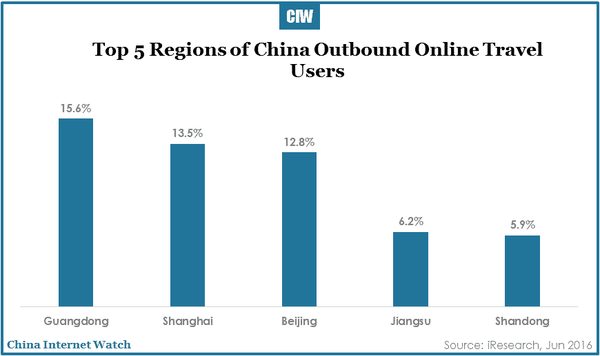
The number of China’s total outbound tourists has increased from 47.66 million in 2009 to 120 million in 2015; the growth rate was 12.1%. Southeast Asia, Japan, South Korea the most popular destinations for Chinese travelers in 2016.
China millennials, also known as Generation Y or post-80s and post-90s by Chinese marketers, account for 25% of the total population and 73% of outbound tourists in China according to GfK.
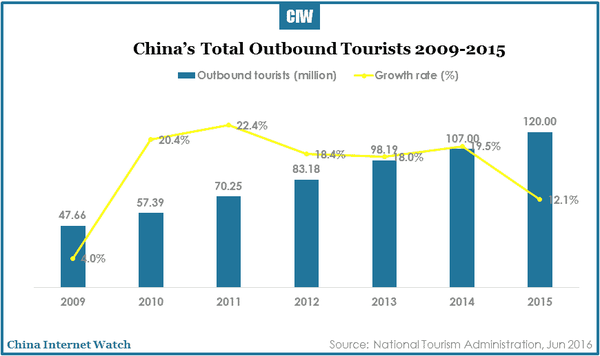
In 2015, China’s outbound tourists spent 215 billion dollars in total, with a growth rate of 30.5%.
Related: China online travel market overview for Q1 2016
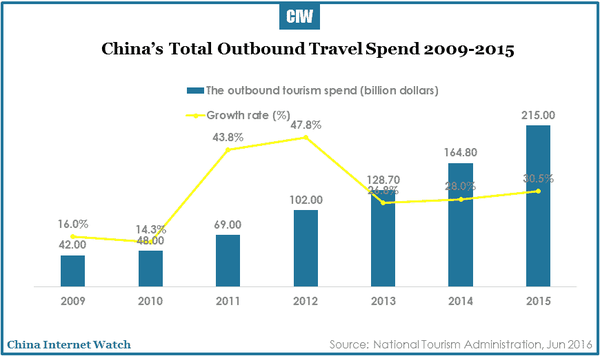
62.8% of China’s outbound online travel users take group trips with travel agents while the others take Free & Easy trips (self-guided tours).
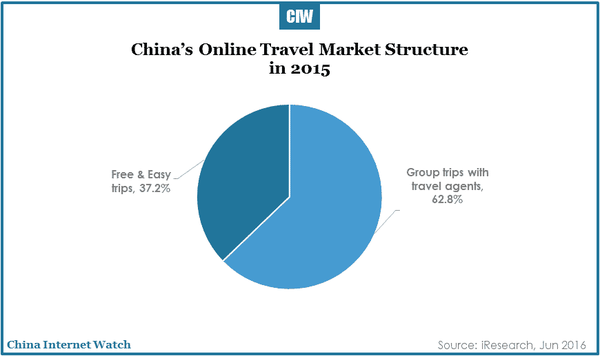
In terms of outbound online group trips with travel agents, the total transaction in 2010 was 2.11 billion yuan (USD 314.15 million); and, it increased to 23.16 billion yuan (USD 3.46 billion) in 2015.
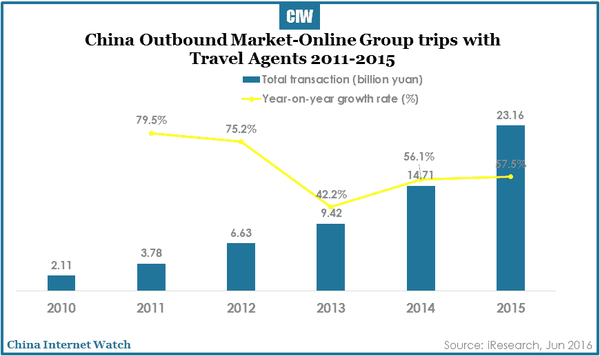
The total transaction of outbound free & easy trips in 2011 reached 450 million yuan (USD 67.32 million); and, it increased to 13.72 billion yuan (USD 2.05 billion) in 2015.
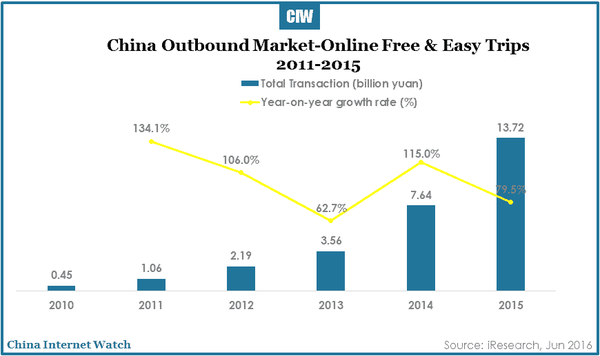
56.9% of China’s online travel users had an outbound travel in the past year; and, 30.8% of the outbound travel users chose free & easy trips while 23.3% users chose group trips with travel agents.
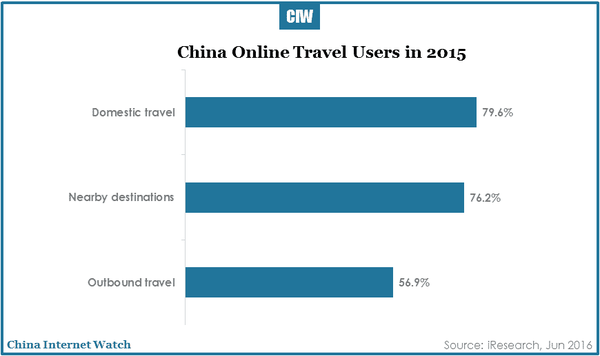
30.8% of China’s outbound online travel users prefer free & easy trips.
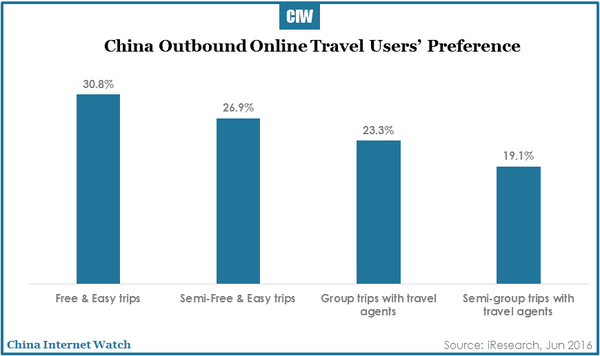
80.8% outbound online travel users obtain information through search engines, social networks (73.3%) and offline channels (66.2%).
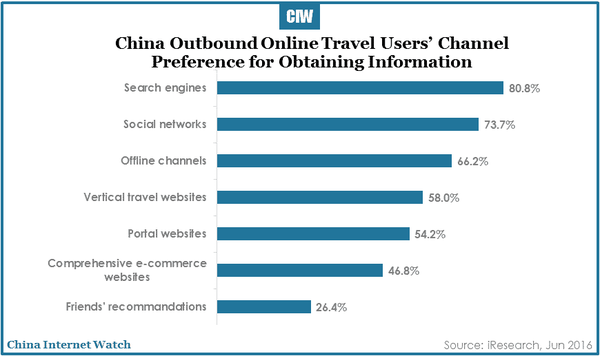
67.1% outbound online travel users listed sightseeing as a reason for outbound travel, followed by relaxing (54.8%), learning something (37.4%), and shopping (36.6%).
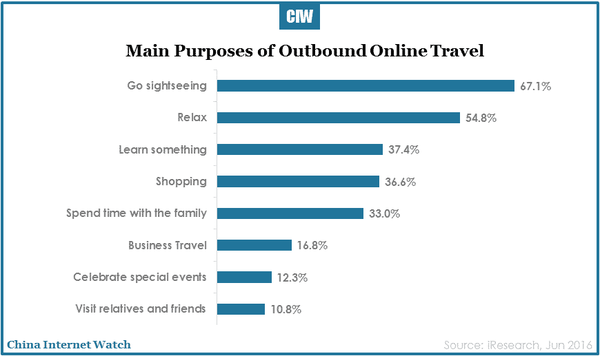
Japan and South Korea are the most popular outbound destinations for Chinese online travel users, accounting for 32%.
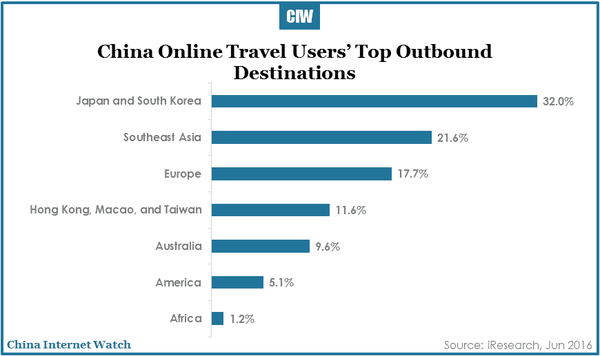
About 84% outbound online travel users travel overseas more than once; 41.25% for 2 to 3 times.
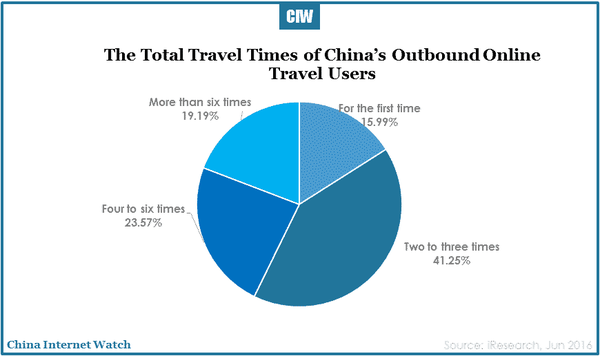
60.5% Chinese outbound online travel users consider the fine sceneries an important factor for selecting outbound travel destinations, followed by cost (52%).
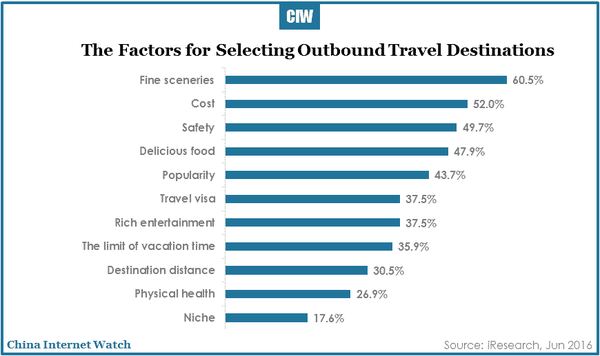
52.4% outbound online travel users have a trip on annual leaves; and, 25.2% on golden weeks.
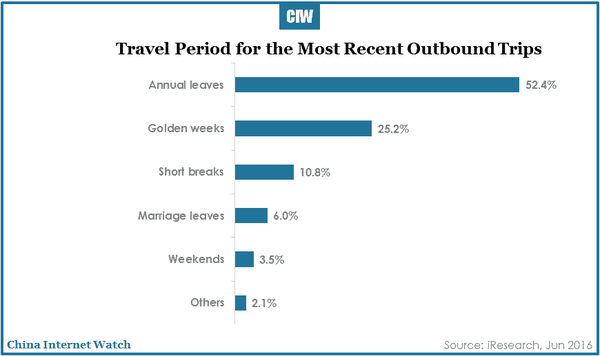
46.7% outbound online travel users prefer trips for 7 to 10 days.
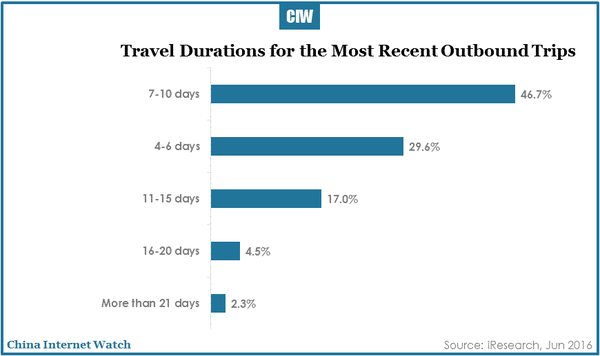
45.6% outbound online travel users are couples or lovers, followed by family members & relatives (21.3%) and friends & classmates (15.2%).
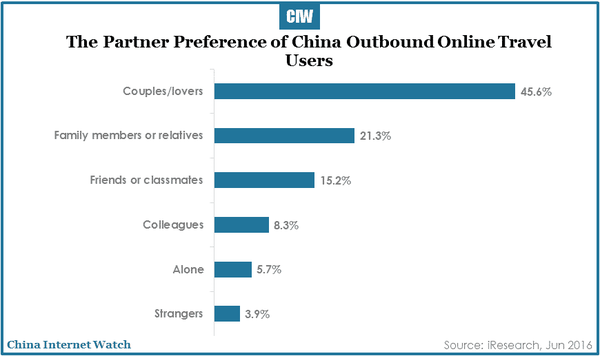
43.8% outbound online travel users prefer booking standard package.
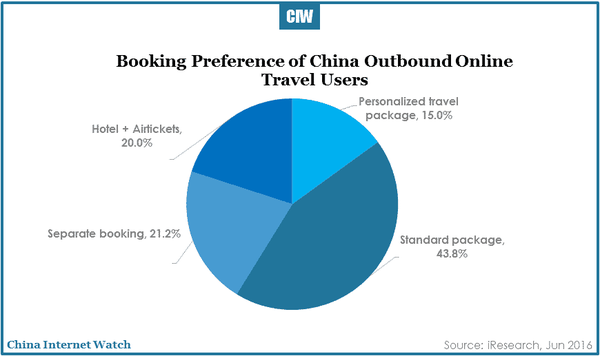
In terms of booking devices, 54.2% outbound online travel users prefer using desktop computers.
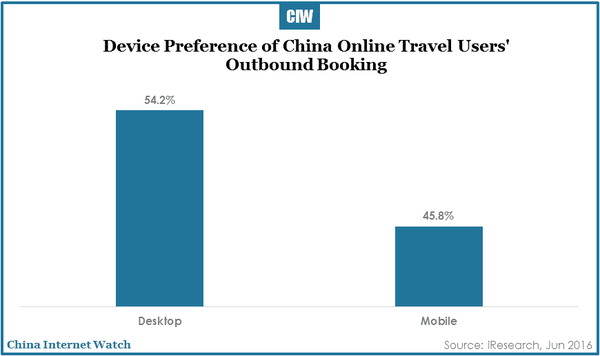
37.2% outbound online travel users prefer using Alipay for payment, followed by ATM card (29%) and online banking (17.3%).
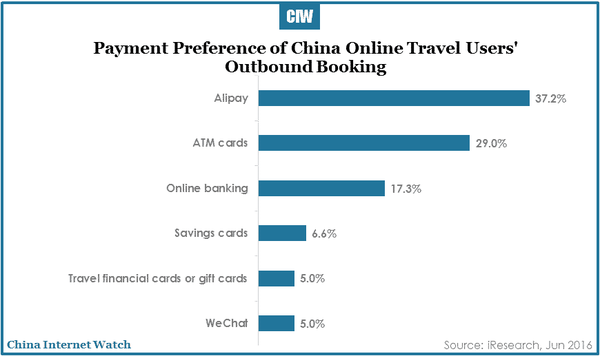
On desktops, 64.3% outbound online travel users used WeChat for payment while there are 70.4% users use online banking on mobile.
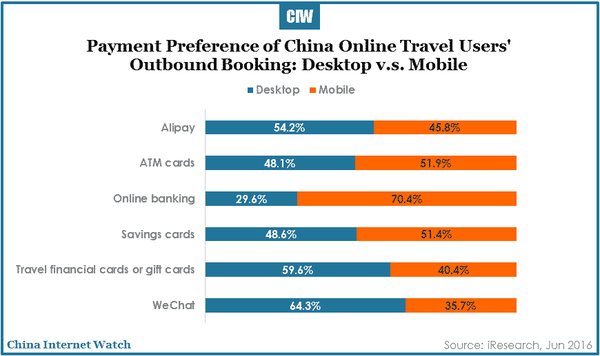
38% of China’s outbound online travel users spend an average of 5,001 to 10,000 yuan in their trips; 35.4% spend 10,001 to 20,000 yuan.
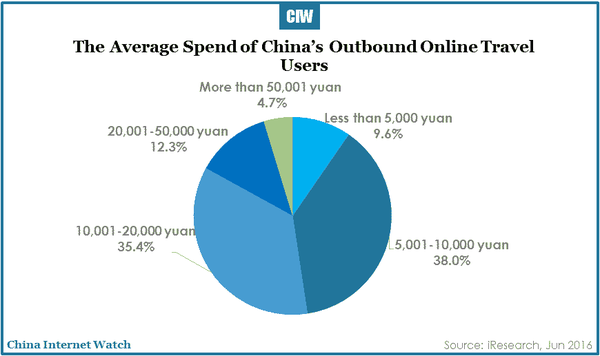
The top spending category is shopping (41%), followed by transportation (23.6%).
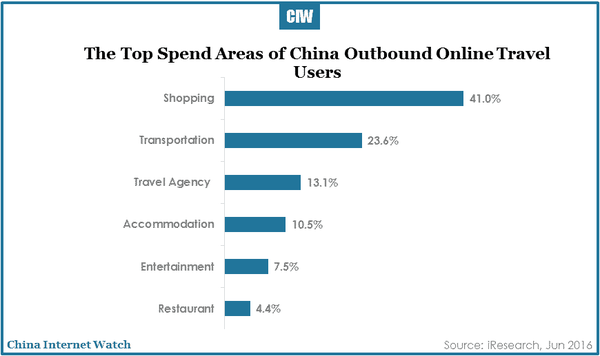
91.7% users use financial products; of which, 28.3% users prefer the third party financial products; and, 45.9% users prefer insurance.
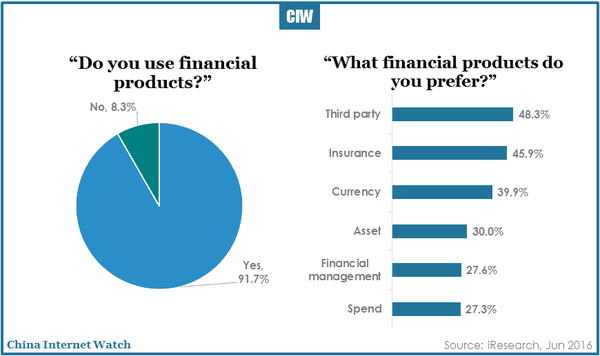
To purchase in outbound trips, 71.2% users prefer referring to travel guides, followed by friends’ recommendations (53.6%) and channels of local travel websites (52.1%).
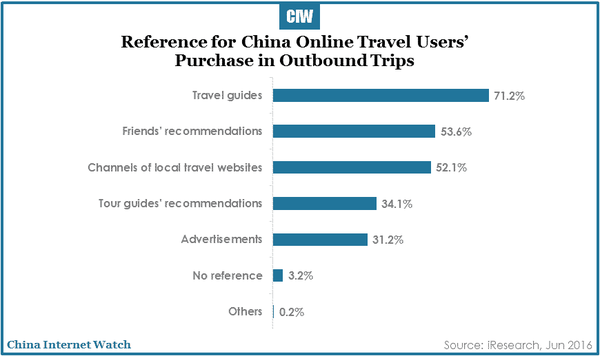
The most frequently used services in outbound travels are map navigation (52.9%), mobile Wi-Fi (48.3%), and tax refund (45.9%).
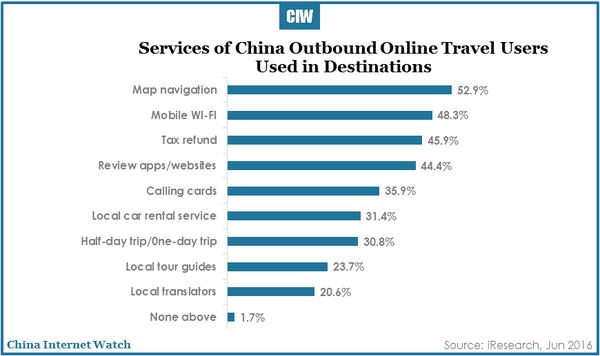
62.9% outbound online travel users prefer sharing information on social networking sites.
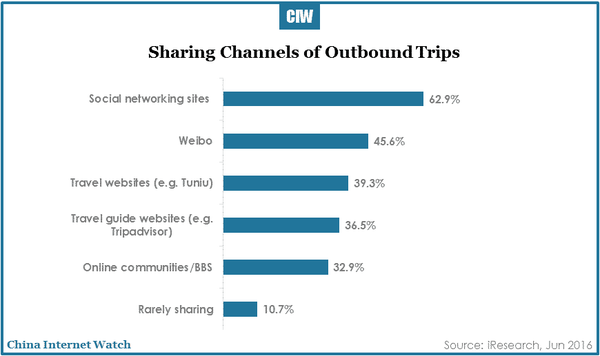
Southeast Asia, Japan, and South Korea are the most potential destinations for Chinese outbound online travel users to travel in 2016.
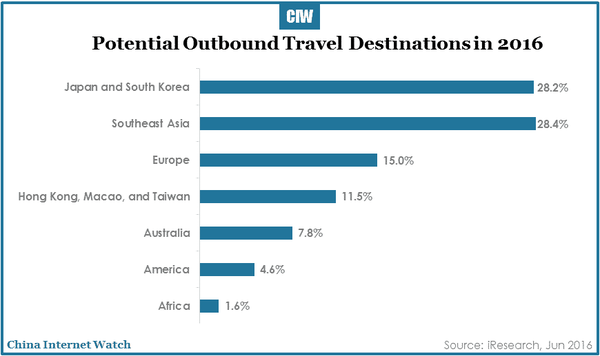
Fine sceneries, safety, and cost are top 3 factors that influence both the actual and the potential outbound travel users in choosing travel destinations.
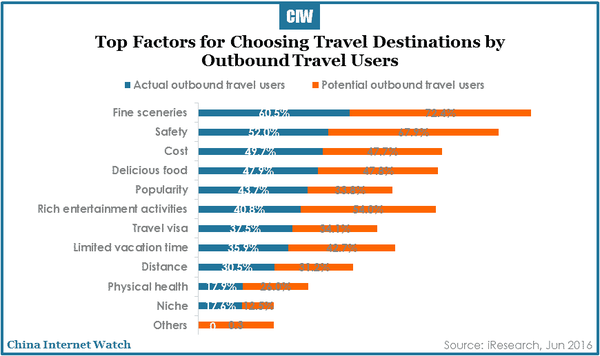
38.9% potential outbound travel users prefer booking on the desktop; and, 33.1% prefer booking on mobile.
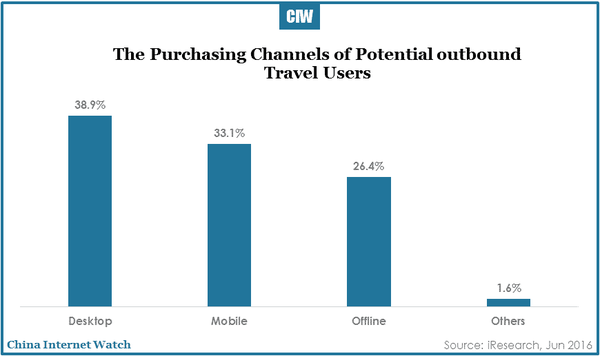
The top 3 factors for choosing travel products by potential outbound travel users are good value for money (73%), product variety (60.9%), and high popularity of websites (59.3%).
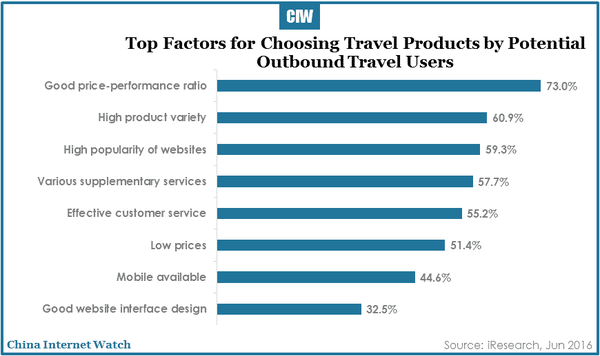
27% potential outbound online travel users prefer Free & Easy trips; 19.3% prefer Free & Easy trips + Tour guides.
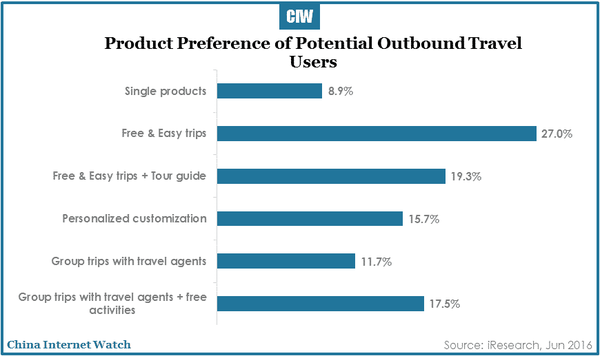
37.7% potential outbound travel users prefer booking on the same websites while 35.1% prefer using different websites.
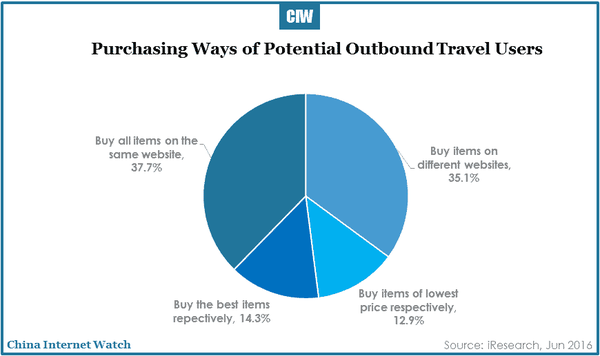
China outbound travel users are young (56.3% users are between 25 to 35 y-o), high intelligent (over 60% of them have a university degree and 31% are middle managements), high income (21.7% users earn 10,000 yuan, USD 1498, monthly); and, the male (66.6%) are more than the female (33.4%).
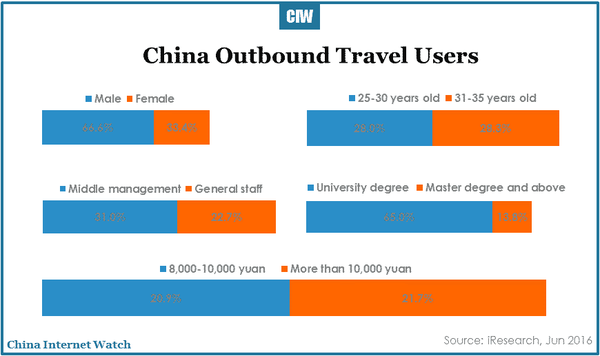
In terms of regions, 15.6% outbound online travel users come from Guangdong, followed by Shanghai (13.5%), and Beijing (12.8%).
